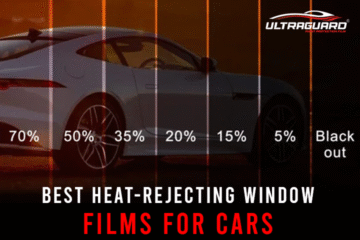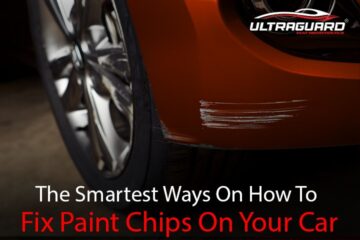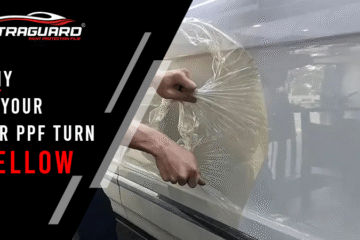All car owners want a showroom finish that lasts, but paint chips, bird droppings, UV damage, and everyday wear can all rob your vehicle of its luster. Not only does harm to your paint take away from appearance, but it also affects the vehicle’s worth. This is where high-quality paint protection film for cars comes in. A clear, thin urethane or polyurethane coating, PPF protects your vehicle from everyday dangers.
But not all Paint Protection Film is equal. Some yellow, some peel or don’t self-heal, leaving you with disappointment instead of protection. With this guide, you’ll be able to tell high-quality paint protection film from the ordinary. We’ll discuss material properties, brand comparisons, installer interviews, maintenance tips, budget analysis, and a strong FAQ section so that you’re adequately ready before investing.

Let’s begin.
Why High-Quality Paint Protection Film Matters to Invest In!
A. Lifetime Car Aesthetics
That showroom gloss you fell in love with lasts forever—no fading, scratching, or dullness that comes with everyday driving.
B. Better Resale Value
Unblemished paint cars get much more resale value. High-Quality Paint Protection Film keeps the paint beneath the film looking like new.
C. Protection from the Elements
Paint Protection Film provides a first defense against gravel chips, scratches, bug acid, sap, and even small door dings.
D. Lower Maintenance
You can forego constant polished cycles with high-end PPF. Dirt and stains come off more easily, saving time and maintenance dollars.
E. Cost Savings
While up-front costs appear expensive, in the long run the benefits exceed it—fewer repairs, fewer detailing, and a maintained appearance.
Anatomy of Paint Protection Film–
Before you can assess High-Quality Paint Protection Film, you need to know its anatomy:
1. Top Coat (Clearcoat)
- Protects from UV light
- Has self-healing abilities that speed up when exposed to heat, sunlight, or warm water, and get the job done.
2. Urethane Film
- Protects against impact and abrasions
- Thickest films provide the greatest protection but may lose flexibility.
3. Adhesive Backing
- Bonds to the vehicle paint without damaging it
- High-strength adhesive doesn’t leave a residue
4. Release Liner
- The back layer is removed during installation.
- Brands also put on UV inhibitors, stain-resistant finishes, and color-stabilizing chemistry.
Indications of High‑Quality Paint Protection Film-
1. Thickness
- Top-of-the-line films are 8–10 mils (thousandths of an inch) thick.
- ≥ 8 mil: excellent impact protection
- 6–7 mil: more flexible but less hard-wearing—use for curves
- Always check product thickness; don’t believe unsubstantiated claims.
2. Topcoat and Self‑Healing
- High-end PPFs contain heat-activated self-healing. Small scratches disappear when heated—no rubbing compound required.
- Scratch lightly, heat up (hairdryer/sun), and the scratch disappears.
3. Clarity and Shine
- High-quality Paint Protection Film should be nearly undetectable, maintaining factory shine.
Avoid:
- Orange peel texture
- Cloudy or yellow color
- Visible film edges
4. UV and Yellowing Resistance
- Sun exposure can yellow poor films within months.
- High-end PPFs contain UV inhibitors and may feature warranties against discoloration.
5. Stain and Chemical Resistance
PPF needs to resist
- Bird droppings
- Tree sap
- Fuel spills
- Great films feature hydrophobic topcoats that water, oils, and contaminants simply bead off, making it a snap to clean.
6. Adhesion and Durability
- Strong but gentle: high-grade adhesives stick well and stay flexible after years.
Poor-quality adhesives irritate
- Peeling
- Lifting at the edges
- Residue when removed
7. Warranty and Brand Reputation
Seek 5–10 year warranties for
- Yellowing
- Cracking
- Peeling
- Adhesion
Worldwide reputable brands include
- UltraShieldX
- UltraGuard
- XPEL
- SunTek
- 3M
These companies pay heavily on R&D, quality assurance, and consumer service.
Identifying Low‑quality PPF-
Steer clear of films that
- Yellow or degrade rapidly
- Don’t self-heal
- Peel readily
- Are brittle
- Has no visible warranty
- Are inordinately cheap
- Request samples or documents before buying.
Selecting, Polling & Vetting Installers-
Even a great High-Quality Paint Protection Film can fail with a bad install. Question your installer:
1. What product line and brand do you use?
Request film samples and product spec sheets.
2. Is the film pre‑cut or hand‑cut?
Pre‑cut (using plotter): more precise, cleaner, fewer seams, hand‑cut- possibly has uneven edges and overhang
3. What preparation do you perform?
Panels should be deep‑cleaned, decontaminated, and dried before application.
4. What kind of warranty protects the film and installation?
Inspect transferability upon resale.
5. Can I view customer testimonials or past work?
Check clarity, seam alignment, and edgework on films.
6. How long does the installation process take?
- Partial install: ~1 day
- Full hood/front bumper: 1–2 days
- Full car wrap: 3–5 days
7. Do you provide maintenance tips?
A professional installer instructs on correct aftercare and cleaning solutions.
Comparing Popular High‑Quality Paint Protection Film Brands-
| Brand | Film Thickness | Self-Healing | Anti-yellowing | Warranty | Finish Options |
| Ultraguard | 8 mil. | Yes | Very High | 7 years | Gloss |
| UltrashieldX | 8.5 mil. | Yes | High | 10 years | Gloss, Matte, Black |
| XPEL Ultimate Plus | 8.5 mil. | Yes | High | 10 years | Gloss, Stealth (Matte) |
| SunTek Ultra | 8 mil. | Yes | High | 10 years | Gloss, Matte |
| 3M Pro Series | 8.0 mil. | Yes | High | 7 years | Gloss |
| Stek DYNO shield | 8-10 years | Yes | High | 10 years | Gloss |
Get product spec sheets and compare:
- Thickness
- UV resistance lab results
- Self-healing tests
- Warranty coverage
- Approved installers
DIY PPF Kits: Risks & Limitations-
DIY may seem cheaper, but it’s got limitations:
- Film is hard to work with: misalignment, bubbles, creases
- Difficult edgework, peeling hazard
- No warranty or professional technical support
- Material is cheaper, but installation quality compromises
Unless you’re patient and experienced, use a pro installer.
Professional vs DIY: A Comparison
| Feature | DIY Kit |
Professional Installation
|
| Film Quality | Entry-to-mid-grade | High-quality, brand-specific |
| Precision Installation | Manual, prone to errors | Plotter-cut pattern, millimeter-precise |
| Warranty | Rarely offered | 5-10 years on film & labor |
| Cost | Lower Upfront | Higher Overall |
| Appearance Quality | Likely uneven edges, bubbles | Smooth finish, hidden seams |
| Maintenance Advice | Minimal assistance | Full guidance and support |
| Time to Install | 2-4+ hours/day | 1-5 days (depending on coverage) |
Caring for Your Paint Protection Film
A. Immediate Post‑Install Care
- Avoid cleaning for 48 hours.
- Let the adhesive fully heal.
B. Safe Washing Techniques
- Don’t use pH-heavy shampoo.
- Do not use hard brushes or steel wool.
- Go for microfiber cloths.
- Keep the pressure washer nozzle ≥ 12 inches away from seams.
C. Sealants & Waxes
- Use PPF-safe sealants every 3–4 months.
- Waxing is not needed with most high-end films.
D. Handling Scratches
- Use heat to trigger self-healing. For deeper scratches, see your installer.
E. Stain Prevention
- Immediately clean bird droppings, bug splatter, sap, and fuel. These etch clearcoat if untreated.
F. Avoid Harsh Chemicals
- Do not use abrasive polishes, tar removers, or rough detailing clay.
G. Long-Term Inspection
- Examine the lifting edges every year and immediately reseal them to prevent dirt entry.
Cost Breakdown: Is Premium PPF Worth It?
Price Ranges in India
- Partial coverage (hood + fenders + bumper): ₹15K–₹30K
- Full front (hood + bumper + full fenders): ₹40K–₹70K
- Full car wrap: ₹80K–₹150K
- Prices depend on film brand, paint color, vehicle model, and installer expertise.
- Long‑Term Savings
- Reduces repaint or repair costs
- Maintains resale value
- Minimizes detailing/workshop expenses
- Even with a higher initial cost, the long-term value — both monetary and aesthetic — is substantial.
The True ROI of High‑Quality Paint Protection Film
A high-quality, well-maintained PPF can last 7–10 years with warranty assurances. You’ll likely:
- Avoid respray bills (₹40–60K+)
- Command better pricing at resale
- Save on detailing and wax upkeep
- The film pays for itself within 2–4 years.
Myth Busters: Common PPF Misconceptions
1. Myth: Only for luxury cars
- Reality: Any vehicle can be enhanced by PPF
2. Myth: Ceramic coating is sufficient
- Reality: Ceramic maintains surface gloss; PPF protects from physical damage
3. Myth: PPF harms paint
- Reality: Top films employ safe adhesives that will not damage factory finishes
4. Myth: All PPFs are the same
- Reality: Dramatic quality differences exist—brand and installer make up for a huge difference
5. Myth: Film becomes noticeable after installation
- Reality: Leading brands are usually invisible, maintaining quality factory color and sheen
Final Checklist: Your PPF Buyer’s Guide
Before making your decision, ensure each bullet is ticked:
- Verified 8–10 mil film
- Heat-activated self-healing top coat
- High clarity, minimal sheen loss
- Proven UV & yellowing resistance
- Strong chemical and stain resistance
- Clear 5–10 year warranty
- Respected brand (UltrashieldX, Ultraguard, etc.)
- Pre-cut film professional installation
- The installer offers aftercare service
- Easy to see the maintenance plan
- Transparent itemized pricing
Also read
How Paint Protection Film Helps the Environment: Eco-Friendly Advantages Explained
Must-Have Accessories for Your New Car: Top 10 Picks
Why Many Car Detailing Studios Hit the Skids: A Deep Dive into Industry Pitfalls
Can Paint Protection Film Save Your Money?
Ultraguard Window Tint to Keep Your Car Cool in the Summer Heat
Is Your Car Ready for the Rain? Ultimate Monsoon Car Maintenance Checklist
Decoding Car Window Tinting Laws in India
Ultimate Summer Car Care Tips Every Driver Should Know
How to Choose the Best Location for Your Car Detailing Business: 5 Proven Tips
The Evolution of Car Paint Protection
Winidng Up!
Purchasing premium paint protection film for cars is a sensible and eco-friendly method to maintain the appearance and value of your car. In addition to withstanding typical wear and tear, it also decreases long-term expenses, improves resale value, and requires less maintenance.
To help you make an informed decision, this guide covers everything from film thickness and clarity to choosing reliable manufacturers and installers. Just make sure the film satisfies the previously mentioned requirements if you choose Ultraguard or UltraShieldX. Your car’s dignity will be preserved for many years to come with the right maintenance and installation.
Frequently Asked Questions(FAQs)
Q1. How long does top-quality PPF last?
Most brands provide 7–10-year warranties. With good care, the film is clear and undamaged during that time. UV and heat cause quality to degrade, so use UV-resistant films.
Q2. Can PPF be cleanly removed?
Yes—professional installers employ heat guns and proper equipment. A good-quality PPF doesn’t leave any residue or paint damage. Low-grade films peel, leaving an ugly residue behind.
Q3. Is PPF compatible with ceramic coatings?
Yes. Some installers place ceramic coating over PPF for further gloss and stain resistance. Ensure the coating is “PPF-safe” to maintain film properties.
Q4. Is PPF dent-proof?
PPF swallows up light scratches, chips, and abrasions. For hail or severe impact, add paintless dent repair or protective wrap with a superior impact rating.
Q5. Will PPF yellow in sunny weather?
Not if you select a film that is UV-resistant with a warranty. Manufacturers such as UltrashieldX and Ultraguard provide solid solutions. Poor-quality films, however, sunburn after months.
Q6. Is it possible to polish over PPF?
Yes, but only using non-abrasive polishes. Always refer to the film manufacturer’s instructions and patch test on small areas first.
Q7. Can PPF be applied over matte paint?
Yes—search for matte/stealth PPF solutions. Make sure the installer is familiar with matte since seams are more difficult to hide.
Q8. Will putting on PPF void my vehicle warranty?
No, having an OEM-approved PPF installed doesn’t void vehicle warranties under international Lemon Laws. But DIY installations leading to paint damage are a different story.
Q9. What about overlapping films?
Professional installers employ precise patterns and plotters to avoid overlap and produce clean seams.
Q10. Resale value—how much is PPF worth?
While hard to quantify precisely, a well-maintained PPF boosts perceived value by 10–15%, not including avoidance of paint repair costs.




0 Comments